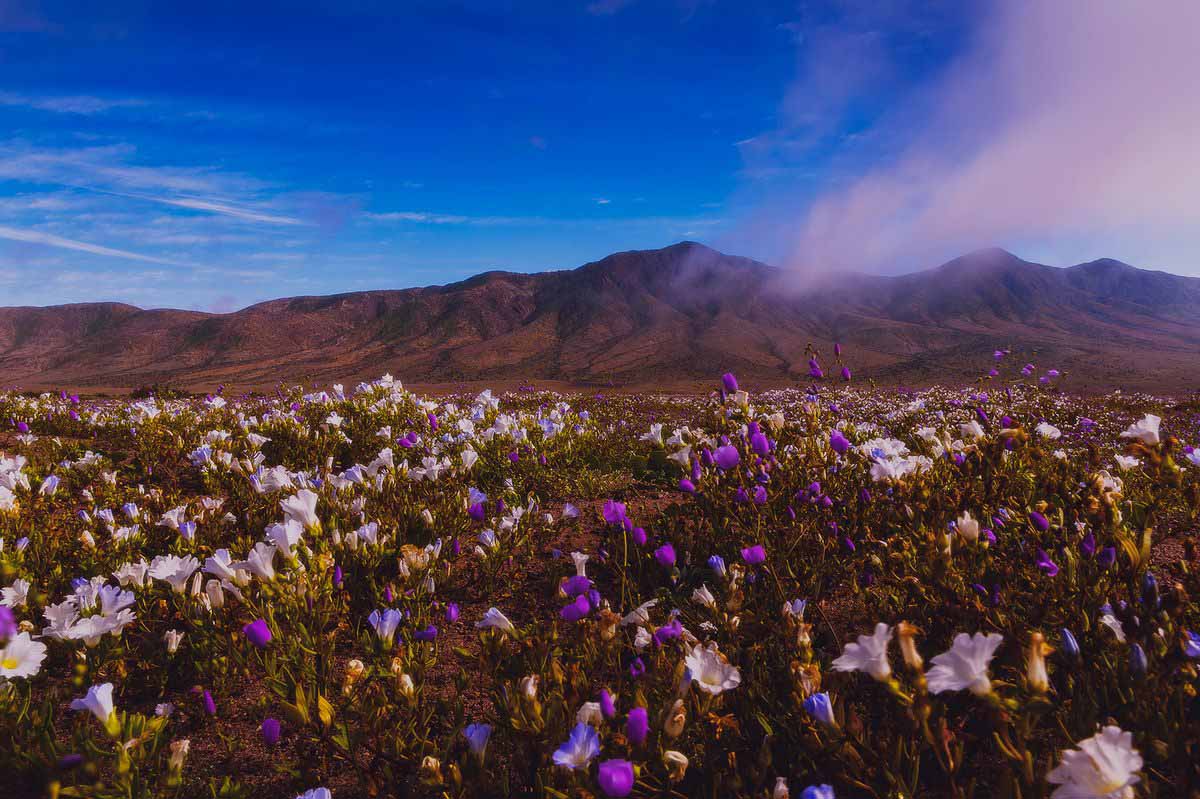
Wild Life: Desierto Florido | Travel News
Most of the time, Chile's Atacama Desert is gritty, cracked, and red. It receives less than 0.6 inch (1.5 cm) of rain annually, about the same as six hours of light drizzle, and some years, it doesn't rain at all. Typically, the only plants that survive here are those lucky enough to grow near one of the rare streams, groundwater reserves, or along the fog-laden coast.
However, during certain years, the desert becomes slightly more humid due to El Niño, a weather pattern that increases rainfall in the Americas. With a bit more moisture, trillions of seeds lying dormant just below the sand begin to awaken. They sprout, grow leaves, and form buds. Eventually, vast areas of the desert burst into bloom, displaying vibrant yellows, pinks, oranges, and purples that sweep across the landscape like watercolors, outnumbering the stars above.
This phenomenon is known as "desierto florido" or "blooming desert" in Chile. As described by scientist Andres Moreira-Muñoz and his team, this "unusual and explosive" vegetation surge creates a rapidly accelerating ecosystem, with insects and small rodents quickly capitalizing on the sudden, colorful bounty. Botanists, ecologists, and tourists with cameras soon follow.

In 2019, Moreira-Muñoz and his colleagues analyzed satellite images of the region to create a timeline of the Atacama blooms, noting their duration, extent, and intensity. They identified 13 desiertos floridos between 1981 and 2015, each lasting nearly six months on average. The largest bloom in 2011 covered 4,300 square miles (11,000 sq km)—about the size of Hawai‘i’s Big Island.
Their research also indicated that bloom sites are shifting to new locations, likely due to regional climate changes. Climate change poses a significant threat to wildflowers globally, along with other stressors like development, agriculture, land clearing, invasive species, and mining, all contributing to habitat loss.
For this reason, many groups have advocated for declaring the "blooming desert" a protected area in the Atacama. However, as Moreira-Muñoz notes, it’s akin to "trying to put a fence around a phantom." After the desierto florido ends, the flower seeds return to the underground bank and remain dormant until the next slightly wetter year revives them.
Range: Southwestern areas of the Atacama Desert in Chile
Major species: Pata de guanaco (Cistanthe grandiflora), garra de león (Bomarea ovallei), añañuca (Rhodophiala rhodolirion), and many more
How to see them: The Atacama's desierto florido usually occurs between September and November in relatively high rainfall years. A popular viewing spot is near the small city of Copiapó in northern Chile.
